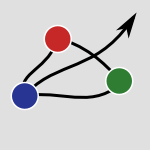Tag #sentiment
181 papers:
 MSR-2019-BiswasVP #analysis #re-engineering #word
MSR-2019-BiswasVP #analysis #re-engineering #word- Exploring word embedding techniques to improve sentiment analysis of software engineering texts (EB, KVS, LLP), pp. 68–78.
 SANER-2019-PaulBS #code review
SANER-2019-PaulBS #code review- Expressions of Sentiments during Code Reviews: Male vs. Female (RP, AB, KZS), pp. 26–37.
 CoG-2019-SykownikBM #analysis #automation #pipes and filters #speech
CoG-2019-SykownikBM #analysis #automation #pipes and filters #speech- Can You Hear the Player Experienceƒ A Pipeline for Automated Sentiment Analysis of Player Speech (PS, FB, MM), pp. 1–4.
 CIKM-2019-ChenLX0 #classification #network
CIKM-2019-ChenLX0 #classification #network- Sentiment Commonsense Induced Sequential Neural Networks for Sentiment Classification (SC, XL, YX, LH0), pp. 1021–1030.
 CIKM-2019-ShiRWR #classification #multi #online
CIKM-2019-ShiRWR #classification #multi #online- Document-Level Multi-Aspect Sentiment Classification for Online Reviews of Medical Experts (TS, VR, SW, CKR), pp. 2723–2731.
 CIKM-2019-WangJLHMD #community #mining #network #social
CIKM-2019-WangJLHMD #community #mining #network #social- Emotional Contagion-Based Social Sentiment Mining in Social Networks by Introducing Network Communities (XW, DJ, ML, DH, KM, JD), pp. 1763–1772.
 CIKM-2019-WangLL19a #evolution #modelling #social
CIKM-2019-WangLL19a #evolution #modelling #social- Modeling Sentiment Evolution for Social Incidents (YW, HL, CL), pp. 2413–2416.
 CIKM-2019-WuWLH0 #classification
CIKM-2019-WuWLH0 #classification- Sentiment Lexicon Enhanced Neural Sentiment Classification (CW, FW, JL, YH, XX0), pp. 1091–1100.
 CIKM-2019-YinLW #analysis #interactive #multi
CIKM-2019-YinLW #analysis #interactive #multi- Interactive Multi-Grained Joint Model for Targeted Sentiment Analysis (DY, XL, XW0), pp. 1031–1040.
 ECIR-p1-2019-DonnellyR #analysis #on the
ECIR-p1-2019-DonnellyR #analysis #on the- On Interpretability and Feature Representations: An Analysis of the Sentiment Neuron (JD, AR), pp. 795–802.
 ECIR-p1-2019-WangOM #analysis #comparison #recommendation
ECIR-p1-2019-WangOM #analysis #comparison #recommendation- Comparison of Sentiment Analysis and User Ratings in Venue Recommendation (XW, IO, CM), pp. 215–228.
 ESEC-FSE-2019-ChenCLML #analysis #approach #learning #named #re-engineering
ESEC-FSE-2019-ChenCLML #analysis #approach #learning #named #re-engineering- SEntiMoji: an emoji-powered learning approach for sentiment analysis in software engineering (ZC, YC, XL, QM, XL), pp. 841–852.
 EDM-2018-CrossleyOLBDB #analysis #modelling
EDM-2018-CrossleyOLBDB #analysis #modelling- Modeling Math Identity and Math Success through Sentiment Analysis and Linguistic Features (SAC, JO, MJL, FB, MD, RSB).
 ICSME-2018-0008ZOPLB #analysis #dataset #re-engineering
ICSME-2018-0008ZOPLB #analysis #dataset #re-engineering- Two Datasets for Sentiment Analysis in Software Engineering (BL0, FZ, RO, MDP, ML, GB), p. 712.
 MSR-2018-NovielliGL08 #analysis #benchmark #metric #re-engineering #research
MSR-2018-NovielliGL08 #analysis #benchmark #metric #re-engineering #research- A benchmark study on sentiment analysis for software engineering research (NN, DG, FL), pp. 364–375.
 SANER-2018-IslamZ #analysis #comparison #re-engineering #tool support
SANER-2018-IslamZ #analysis #comparison #re-engineering #tool support- A comparison of software engineering domain specific sentiment analysis tools (MRI, MFZ), pp. 487–491.
 CIKM-2018-EsuliF0 #network #quantifier
CIKM-2018-EsuliF0 #network #quantifier- A Recurrent Neural Network for Sentiment Quantification (AE, AMF, FS0), pp. 1775–1778.
 CIKM-2018-WangM #classification #multi
CIKM-2018-WangM #classification #multi- Multi-Emotion Category Improving Embedding for Sentiment Classification (SW, XM0), pp. 1719–1722.
 CIKM-2018-WuWL #classification #learning #multi
CIKM-2018-WuWL #classification #learning #multi- Imbalanced Sentiment Classification with Multi-Task Learning (FW, CW, JL), pp. 1631–1634.
 CIKM-2018-YangQZSZ #overview #summary
CIKM-2018-YangQZSZ #overview #summary- Cross-domain Aspect/Sentiment-aware Abstractive Review Summarization (MY0, QQ, JZ, YS, ZZ), pp. 1531–1534.
 ECIR-2018-Zhang0LZ #analysis #matrix #representation #twitter #using
ECIR-2018-Zhang0LZ #analysis #matrix #representation #twitter #using- Unsupervised Sentiment Analysis of Twitter Posts Using Density Matrix Representation (YZ, DS0, XL, PZ0), pp. 316–329.
 ICPR-2018-LiuF #classification
ICPR-2018-LiuF #classification- Introduce More Characteristics of Samples into Cross-domain Sentiment Classification (WL, XF), pp. 25–30.
 KDD-2018-GongW #analysis #behaviour #modelling #network #social
KDD-2018-GongW #analysis #behaviour #modelling #network #social- When Sentiment Analysis Meets Social Network: A Holistic User Behavior Modeling in Opinionated Data (LG, HW), pp. 1455–1464.
 KDD-2018-HuF #analysis #multimodal
KDD-2018-HuF #analysis #multimodal- Multimodal Sentiment Analysis To Explore the Structure of Emotions (AH, SRF), pp. 350–358.
- ICSE-2018-0008ZBPLO #analysis #how #question #re-engineering
- Sentiment analysis for software engineering: how far can we go? (BL0, FZ, GB, MDP, ML, RO), pp. 94–104.
- ICSE-2018-CalefatoLMN #detection #development
- Sentiment polarity detection for software development (FC, FL, FM, NN), p. 128.
 MSR-2017-IslamZ #analysis #automation #re-engineering
MSR-2017-IslamZ #analysis #automation #re-engineering- Leveraging automated sentiment analysis in software engineering (MRI, MFZ), pp. 203–214.
 MSR-2017-SouzaS #analysis
MSR-2017-SouzaS #analysis- Sentiment analysis of Travis CI builds (RRGS, BS), pp. 459–462.
 CIKM-2017-ChengZZKZW #classification #network
CIKM-2017-ChengZZKZW #classification #network- Aspect-level Sentiment Classification with HEAT (HiErarchical ATtention) Network (JC, SZ, JZ, IK, XZ0, HW0), pp. 97–106.
 CIKM-2017-ChenLL #analysis #modelling
CIKM-2017-ChenLL #analysis #modelling- Modeling Language Discrepancy for Cross-Lingual Sentiment Analysis (QC, CL, WL0), pp. 117–126.
 CIKM-2017-TanKMH #overview #retrieval #summary #topic
CIKM-2017-TanKMH #overview #retrieval #summary #topic- Sentence Retrieval with Sentiment-specific Topical Anchoring for Review Summarization (JT, AK, RPM, YH), pp. 2323–2326.
 CIKM-2017-TayTH #analysis #memory management #network
CIKM-2017-TayTH #analysis #memory management #network- Dyadic Memory Networks for Aspect-based Sentiment Analysis (YT, LAT, SCH), pp. 107–116.
 CIKM-2017-XuM #analysis #multimodal #named #network #semantics
CIKM-2017-XuM #analysis #multimodal #named #network #semantics- MultiSentiNet: A Deep Semantic Network for Multimodal Sentiment Analysis (NX, WM), pp. 2399–2402.
 ECIR-2017-ChenLLLLH #analysis
ECIR-2017-ChenLLLLH #analysis- Cross-Lingual Sentiment Relation Capturing for Cross-Lingual Sentiment Analysis (QC, WL0, YL, XL, CL, YH), pp. 54–67.
 ECIR-2017-GiachanouGMC #predict
ECIR-2017-GiachanouGMC #predict- Sentiment Propagation for Predicting Reputation Polarity (AG, JG, IM, FC), pp. 226–238.
 KDD-2017-IosifidisN #learning #scalability
KDD-2017-IosifidisN #learning #scalability- Large Scale Sentiment Learning with Limited Labels (VI, EN), pp. 1823–1832.
 KDD-2017-PaulLTYF #analysis #exclamation #named #twitter #what
KDD-2017-PaulLTYF #analysis #exclamation #named #twitter #what- Compass: Spatio Temporal Sentiment Analysis of US Election What Twitter Says! (DP, FL0, MKT, XY, RF), pp. 1585–1594.
 KDD-2017-WangFWYDX #recommendation
KDD-2017-WangFWYDX #recommendation- A Location-Sentiment-Aware Recommender System for Both Home-Town and Out-of-Town Users (HW0, YF, QW, HY, CD, HX), pp. 1135–1143.
 ASE-2017-AhmedBIR #analysis #code review #interactive #named #overview
ASE-2017-AhmedBIR #analysis #code review #interactive #named #overview- SentiCR: a customized sentiment analysis tool for code review interactions (TA, AB, AI, SR), pp. 106–111.
 MSR-2016-BlazB #analysis
MSR-2016-BlazB #analysis- Sentiment analysis in tickets for IT support (CCAB, KB), pp. 235–246.
 MSR-2016-SinhaLS #commit #developer
MSR-2016-SinhaLS #commit #developer- Analyzing developer sentiment in commit logs (VS, AL, BS), pp. 520–523.
 CIKM-2016-GiachanouMC #twitter
CIKM-2016-GiachanouMC #twitter- Explaining Sentiment Spikes in Twitter (AG, IM, FC), pp. 2263–2268.
 CIKM-2016-WuWHHQ #adaptation #multi
CIKM-2016-WuWHHQ #adaptation #multi- Sentiment Domain Adaptation with Multi-Level Contextual Sentiment Knowledge (FW, SW, YH, SH, YQ), pp. 949–958.
 CIKM-2016-YuSHCH #analysis #data-driven #multi #quantifier
CIKM-2016-YuSHCH #analysis #data-driven #multi #quantifier- Data-Driven Contextual Valence Shifter Quantification for Multi-Theme Sentiment Analysis (HY, JS, MH, MC, JH0), pp. 939–948.
 ECIR-2016-FlaesRW #analysis #multi #what
ECIR-2016-FlaesRW #analysis #multi #what- What Multimedia Sentiment Analysis Says About City Liveability (JBF, SR, MW), pp. 824–829.
 ECIR-2016-LiWPA #analysis #empirical #learning
ECIR-2016-LiWPA #analysis #empirical #learning- An Empirical Study of Skip-Gram Features and Regularization for Learning on Sentiment Analysis (CL, BW, VP, JAA), pp. 72–87.
 HT-2015-GutierrezP #microblog #platform
HT-2015-GutierrezP #microblog #platform- Sentiment-based User Profiles in Microblogging Platforms (FJG, BP), pp. 23–32.
 HT-2015-MishraDBS #analysis #incremental #learning
HT-2015-MishraDBS #analysis #incremental #learning- Sentiment Analysis with Incremental Human-in-the-Loop Learning and Lexical Resource Customization (SM, JD, JB, ES), pp. 323–325.
 EDM-2015-MorettiMS #analysis #education #evaluation #policy #topic
EDM-2015-MorettiMS #analysis #education #evaluation #policy #topic- Application of Sentiment and Topic Analysis to Teacher Evaluation Policy in the U.S (AM, KM, ASA), pp. 628–629.
 ICSME-2015-JongelingDS #analysis #re-engineering #research #tool support
ICSME-2015-JongelingDS #analysis #re-engineering #research #tool support- Choosing your weapons: On sentiment analysis tools for software engineering research (RJ, SD, AS), pp. 531–535.
 HIMI-IKD-2015-GonzalezCB #approach #design #modelling
HIMI-IKD-2015-GonzalezCB #approach #design #modelling- Modeling User’s Sentiment in User Segmentations: An Argumentation Approach for User Centered Design (MPG, CIC, RFB), pp. 595–606.
 SCSM-2015-KinclNPS #analysis #independence
SCSM-2015-KinclNPS #analysis #independence- Language-Independent Sentiment Analysis with Surrounding Context Extension (TK, MN, JP, PS), pp. 158–168.
 CIKM-2015-DingSGHYH #network #predict #video
CIKM-2015-DingSGHYH #network #predict #video- Video Popularity Prediction by Sentiment Propagation via Implicit Network (WD, YS, LG, XH, RY, TH), pp. 1621–1630.
 CIKM-2015-WangHCWL #aspect-oriented #microblog #mining #named
CIKM-2015-WangHCWL #aspect-oriented #microblog #mining #named- ASEM: Mining Aspects and Sentiment of Events from Microblog (RW, WH, WC0, TW, KL), pp. 1923–1926.
 CIKM-2015-ZhaoHSLYZ
CIKM-2015-ZhaoHSLYZ - Sentiment Extraction by Leveraging Aspect-Opinion Association Structure (LZ, MH, JS, HL, XY, XZ0), pp. 343–352.
 ECIR-2015-CanneytCD #classification #topic #twitter
ECIR-2015-CanneytCD #classification #topic #twitter- Topic-Dependent Sentiment Classification on Twitter (SVC, NC, BD), pp. 441–446.
 ECIR-2015-HagenPBS #classification #detection #twitter #using
ECIR-2015-HagenPBS #classification #detection #twitter #using- Twitter Sentiment Detection via Ensemble Classification Using Averaged Confidence Scores (MH, MP, MB, BS), pp. 741–754.
 ECIR-2015-HuynhHR #analysis #learning #strict
ECIR-2015-HuynhHR #analysis #learning #strict- Learning Higher-Level Features with Convolutional Restricted Boltzmann Machines for Sentiment Analysis (TH, YH, SMR), pp. 447–452.
 ECIR-2015-LeeL
ECIR-2015-LeeL - Measuring User Influence, Susceptibility and Cynicalness in Sentiment Diffusion (RKWL, EPL), pp. 411–422.
 ECIR-2015-Moghaddam #analysis #fault #feedback #mining
ECIR-2015-Moghaddam #analysis #fault #feedback #mining- Beyond Sentiment Analysis: Mining Defects and Improvements from Customer Feedback (SM), pp. 400–410.
 ECIR-2015-Peleja #graph #named
ECIR-2015-Peleja #graph #named- PopMeter: Linked-Entities in a Sentiment Graph (FP), pp. 785–788.
 ECIR-2015-PelejaM #learning #retrieval
ECIR-2015-PelejaM #learning #retrieval- Learning Sentiment Based Ranked-Lexicons for Opinion Retrieval (FP, JM), pp. 435–440.
 MLDM-2015-CoralloFMACCGS #analysis #approach
MLDM-2015-CoralloFMACCGS #analysis #approach- Sentiment Analysis for Government: An Optimized Approach (AC, LF, MM, MA, AC, VC, EG, DS), pp. 98–112.
 MLDM-2015-ShaluntsB #analysis #named
MLDM-2015-ShaluntsB #analysis #named- SentiSAIL: Sentiment Analysis in English, German and Russian (GS, GB), pp. 87–97.
 SIGIR-2015-SeverynM15a #analysis #network #twitter
SIGIR-2015-SeverynM15a #analysis #network #twitter- Twitter Sentiment Analysis with Deep Convolutional Neural Networks (AS, AM), pp. 959–962.
 SIGIR-2015-YangKML #modelling #parametricity #topic
SIGIR-2015-YangKML #modelling #parametricity #topic- Parametric and Non-parametric User-aware Sentiment Topic Models (ZY, AK, AM, SL), pp. 413–422.
 SAC-2015-DAddioM #approach #collaboration
SAC-2015-DAddioM #approach #collaboration- A sentiment-based item description approach for kNN collaborative filtering (RMD, MGM), pp. 1060–1065.
 SAC-2015-DermoucheKVL #modelling #topic
SAC-2015-DermoucheKVL #modelling #topic- A joint model for topic-sentiment modeling from text (MD, LK, JV, SL), pp. 819–824.
 SAC-2015-IqbalKK #analysis
SAC-2015-IqbalKK #analysis- Bias-aware lexicon-based sentiment analysis (MI, AK, FK), pp. 845–850.
 SIGMOD-2014-ZhuGCL #analysis #clustering #graph #social #social media
SIGMOD-2014-ZhuGCL #analysis #clustering #graph #social #social media- Tripartite graph clustering for dynamic sentiment analysis on social media (LZ, AG, JC, KL), pp. 1531–1542.
 EDM-2014-WenYR #analysis #question #what
EDM-2014-WenYR #analysis #question #what- Sentiment Analysis in MOOC Discussion Forums: What does it tell us? (MW, DY, CPR), pp. 130–137.
 MSR-2014-GuzmanAL #analysis #commit #empirical #git
MSR-2014-GuzmanAL #analysis #commit #empirical #git- Sentiment analysis of commit comments in GitHub: an empirical study (EG, DA, YL), pp. 352–355.
 MSR-2014-PleteaVS #analysis #git #security
MSR-2014-PleteaVS #analysis #git #security- Security and emotion: sentiment analysis of security discussions on GitHub (DP, BV, AS), pp. 348–351.
 CHI-PLAY-2014-SunMGMC #design #game studies
CHI-PLAY-2014-SunMGMC #design #game studies- Playing with emotions: sentiment design for public space (ES, MM, GG, MEM, DMC), pp. 439–440.
 EDOC-2014-MukkamalaHV #analysis #social
EDOC-2014-MukkamalaHV #analysis #social- Fuzzy-Set Based Sentiment Analysis of Big Social Data (RRM, AH, RKV), pp. 71–80.
 CIKM-2014-FangQHZ #composition #overview #ranking #summary #using
CIKM-2014-FangQHZ #composition #overview #ranking #summary #using- Ranking Sentiment Explanations for Review Summarization Using Dual Decomposition (LF, QQ, MH, XZ), pp. 1931–1934.
 CIKM-2014-LiangZHGB #identification #named #novel #word
CIKM-2014-LiangZHGB #identification #named #novel #word- CONR: A Novel Method for Sentiment Word Identification (JL, XZ, YH, LG, SB), pp. 1943–1946.
 CIKM-2014-LimB #topic #twitter
CIKM-2014-LimB #topic #twitter- Twitter Opinion Topic Model: Extracting Product Opinions from Tweets by Leveraging Hashtags and Sentiment Lexicon (KWL, WLB), pp. 1319–1328.
 CIKM-2014-LinJXWCW #analysis
CIKM-2014-LinJXWCW #analysis- A Cross-Lingual Joint Aspect/Sentiment Model for Sentiment Analysis (ZL, XJ, XX, WW, XC, YW), pp. 1089–1098.
 CIKM-2014-LinLYC #classification #modelling
CIKM-2014-LinLYC #classification #modelling- Exploring Ensemble of Models in Taxonomy-based Cross-Domain Sentiment Classification (CKL, YYL, CHY, HHC), pp. 1279–1288.
 ECIR-2014-MonizJ #analysis
ECIR-2014-MonizJ #analysis- Sentiment Analysis and the Impact of Employee Satisfaction on Firm Earnings (AM, FdJ), pp. 519–527.
 KDD-2014-DiaoQWSJW #aspect-oriented #modelling #recommendation
KDD-2014-DiaoQWSJW #aspect-oriented #modelling #recommendation- Jointly modeling aspects, ratings and sentiments for movie recommendation (JMARS) (QD, MQ, CYW, AJS, JJ, CW), pp. 193–202.
 KDD-2014-SudhofEMP #social
KDD-2014-SudhofEMP #social- Sentiment expression conditioned by affective transitions and social forces (MS, AGE, ALM, CP), pp. 1136–1145.
 KDIR-2014-HasnaMDP #recommendation
KDIR-2014-HasnaMDP #recommendation- Sentiment Polarity Extension for Context-Sensitive Recommender Systems (OLH, FCM, MD, RP), pp. 126–137.
 KDIR-2014-LiuF #analysis #classification #topic #web
KDIR-2014-LiuF #analysis #classification #topic #web- Web Content Classification based on Topic and Sentiment Analysis of Text (SL, TF), pp. 300–307.
 KDIR-2014-LiuF14a #analysis #classification #n-gram #similarity #web
KDIR-2014-LiuF14a #analysis #classification #n-gram #similarity #web- Combining N-gram based Similarity Analysis with Sentiment Analysis in Web Content Classification (SL, TF), pp. 530–537.
 KDIR-2014-NagwanshiM #detection #semantics #using
KDIR-2014-NagwanshiM #detection #semantics #using- Sarcasm Detection using Sentiment and Semantic Features (PN, CEVM), pp. 418–424.
 KDIR-2014-PsomakelisTAV #analysis #twitter
KDIR-2014-PsomakelisTAV #analysis #twitter- Comparing Methods for Twitter Sentiment Analysis (EP, KT, DA, TAV), pp. 225–232.
 KDIR-2014-WanJLL #analysis #challenge #web
KDIR-2014-WanJLL #analysis #challenge #web- Sentimental Analysis of Web Financial Reviews — Opportunities and Challenges (CW, TJ, DL, GL), pp. 366–373.
 KMIS-2014-DinsoreanuB #classification #twitter
KMIS-2014-DinsoreanuB #classification #twitter- Unsupervised Twitter Sentiment Classification (MD, AB), pp. 220–227.
 RecSys-2014-YuanMZS #predict
RecSys-2014-YuanMZS #predict- Exploiting sentiment homophily for link prediction (GY, PKM, ZZ, MPS), pp. 17–24.
 SIGIR-2014-HaiCCLC #overview
SIGIR-2014-HaiCCLC #overview- Coarse-to-fine review selection via supervised joint aspect and sentiment model (ZH, GC, KC, WL, PC), pp. 617–626.
 SIGIR-2014-LourencoVPMFP #analysis
SIGIR-2014-LourencoVPMFP #analysis- Economically-efficient sentiment stream analysis (RLdOJ, AV, AMP, WMJ, RF, SP), pp. 637–646.
 SIGIR-2014-PelejaSM #analysis
SIGIR-2014-PelejaSM #analysis- Reputation analysis with a ranked sentiment-lexicon (FP, JS, JM), pp. 1207–1210.
 SIGIR-2014-ZhangL0ZLM #analysis #modelling #recommendation
SIGIR-2014-ZhangL0ZLM #analysis #modelling #recommendation- Explicit factor models for explainable recommendation based on phrase-level sentiment analysis (YZ, GL, MZ, YZ, YL, SM), pp. 83–92.
 SIGIR-2014-ZhangZ0LM #classification #overview
SIGIR-2014-ZhangZ0LM #classification #overview- Do users rate or review?: boost phrase-level sentiment labeling with review-level sentiment classification (YZ, HZ, MZ, YL, SM), pp. 1027–1030.
 RE-2014-GuzmanM #analysis #fine-grained #how
RE-2014-GuzmanM #analysis #fine-grained #how- How Do Users Like This Feature? A Fine Grained Sentiment Analysis of App Reviews (EG, WM), pp. 153–162.
 HT-2013-KrestelS #generative #topic
HT-2013-KrestelS #generative #topic- Generating contextualized sentiment lexica based on latent topics and user ratings (RK, SS), pp. 129–138.
 HT-2013-YangZYW #personalisation #recommendation
HT-2013-YangZYW #personalisation #recommendation- A sentiment-enhanced personalized location recommendation system (DY, DZ, ZY, ZW), pp. 119–128.
 ICDAR-2013-NalisnickB #network
ICDAR-2013-NalisnickB #network- Extracting Sentiment Networks from Shakespeare’s Plays (ETN, HSB), pp. 758–762.
 SIGMOD-2013-TsytsarauAP #correlation #performance #scalability
SIGMOD-2013-TsytsarauAP #correlation #performance #scalability- Efficient sentiment correlation for large-scale demographics (MT, SAY, TP), pp. 253–264.
 HCI-III-2013-DasG #exclamation
HCI-III-2013-DasG #exclamation- Sentimental Eyes! (AD, BG), pp. 310–318.
 HIMI-D-2013-YanagimotoSY #classification #estimation #network #using #word
HIMI-D-2013-YanagimotoSY #classification #estimation #network #using #word- Word Classification for Sentiment Polarity Estimation Using Neural Network (HY, MS, AY), pp. 669–677.
 OCSC-2013-YuanOXS #classification #overview #using #web
OCSC-2013-YuanOXS #classification #overview #using #web- Sentiment Classification of Web Review Using Association Rules (MY, YO, ZX, HS), pp. 442–450.
 CIKM-2013-BrossE #automation #mining #overview
CIKM-2013-BrossE #automation #mining #overview- Automatic construction of domain and aspect specific sentiment lexicons for customer review mining (JB, HE), pp. 1077–1086.
 CIKM-2013-FangHZ #analysis #overview
CIKM-2013-FangHZ #analysis #overview- Exploring weakly supervised latent sentiment explanations for aspect-level review analysis (LF, MH, XZ), pp. 1057–1066.
 ECIR-2013-ErmakovE #classification
ECIR-2013-ErmakovE #classification- Sentiment Classification Based on Phonetic Characteristics (SE, LE), pp. 706–709.
 KDIR-KMIS-2013-CheetiSC #adaptation #approach #classification #naive bayes #syntax #using
KDIR-KMIS-2013-CheetiSC #adaptation #approach #classification #naive bayes #syntax #using- Cross-domain Sentiment Classification using an Adapted Naïve Bayes Approach and Features Derived from Syntax Trees (SC, AS, DC), pp. 169–176.
 KDIR-KMIS-2013-DimasKV #approach #twitter
KDIR-KMIS-2013-DimasKV #approach #twitter- Every Character Counts — A Character based Approach to Determine Political Sentiment on Twitter (AD, PCK, EMV), pp. 261–266.
 KDIR-KMIS-2013-LlavoriLGNAS #analysis #framework #named #towards
KDIR-KMIS-2013-LlavoriLGNAS #analysis #framework #named #towards- i-SLOD: Towards an Infrastructure for Enabling the Dissemination and Analysis of Sentiment Data (RBL, DML, LGM, VN, MJA, IS), pp. 214–219.
 RecSys-2013-DongOSMS #recommendation
RecSys-2013-DongOSMS #recommendation- Sentimental product recommendation (RD, MPO, MS, KM, BS), pp. 411–414.
 SIGIR-2013-AktolgaA #bias
SIGIR-2013-AktolgaA #bias- Sentiment diversification with different biases (EA, JA), pp. 593–602.
 SIGIR-2013-PappasP #analysis #collaboration
SIGIR-2013-PappasP #analysis #collaboration- Sentiment analysis of user comments for one-class collaborative filtering over ted talks (NP, APB), pp. 773–776.
 SAC-2013-HogenboomBFBJK #analysis
SAC-2013-HogenboomBFBJK #analysis- Exploiting emoticons in sentiment analysis (AH, DB, FF, MB, FdJ, UK), pp. 703–710.
 HT-2012-AisoposPTV #analysis #comparative #microblog
HT-2012-AisoposPTV #analysis #comparative #microblog- Content vs. context for sentiment analysis: a comparative analysis over microblogs (FA, GP, KT, TAV), pp. 187–196.
 CHI-2012-YangAAWL
CHI-2012-YangAAWL - The way i talk to you: sentiment expression in an organizational context (JY, LAA, MSA, ZW, CYL), pp. 551–554.
 CIKM-2012-AmiriC #mining
CIKM-2012-AmiriC #mining- Mining sentiment terminology through time (HA, TSC), pp. 2060–2064.
 CIKM-2012-JuLSZHL #classification #documentation #word
CIKM-2012-JuLSZHL #classification #documentation #word- Dual word and document seed selection for semi-supervised sentiment classification (SJ, SL, YS, GZ, YH, XL), pp. 2295–2298.
 CIKM-2012-LinTCXS #effectiveness #performance #using
CIKM-2012-LinTCXS #effectiveness #performance #using- Effective and efficient?: bilingual sentiment lexicon extraction using collocation alignment (ZL, ST, XC, XX, WS), pp. 1542–1546.
 CIKM-2012-MukherjeeMRB #multi #named #twitter
CIKM-2012-MukherjeeMRB #multi #named #twitter- TwiSent: a multistage system for analyzing sentiment in twitter (SM, AM, BAR, PB), pp. 2531–2534.
 CIKM-2012-VuralCS #crawling #web
CIKM-2012-VuralCS #crawling #web- Sentiment-focused web crawling (AGV, BBC, PS), pp. 2020–2024.
 CIKM-2012-XuTLCL #aspect-oriented #towards
CIKM-2012-XuTLCL #aspect-oriented #towards- Towards jointly extracting aspects and aspect-specific sentiment knowledge (XX, ST, YL, XC, ZL), pp. 1895–1899.
 ECIR-2012-Garcia-MoyaAL #modelling #probability #retrieval
ECIR-2012-Garcia-MoyaAL #modelling #probability #retrieval- Combining Probabilistic Language Models for Aspect-Based Sentiment Retrieval (LGM, HAS, RBL), pp. 561–564.
 ECIR-2012-KarlgrenSOEH #analysis
ECIR-2012-KarlgrenSOEH #analysis- Usefulness of Sentiment Analysis (JK, MS, FO, FE, OH), pp. 426–435.
 KDD-2012-ZhaoDWX #analysis #named #twitter
KDD-2012-ZhaoDWX #analysis #named #twitter- MoodLens: an emoticon-based sentiment analysis system for chinese tweets (JZ, LD, JW, KX), pp. 1528–1531.
 KDIR-2012-FukumotoMM #analysis #collaboration #recommendation
KDIR-2012-FukumotoMM #analysis #collaboration #recommendation- Collaborative Filtering based on Sentiment Analysis of Guest Reviews for Hotel Recommendation (FF, CM, SM), pp. 193–198.
 KDIR-2012-MountassirBB #analysis #problem #semistructured data #set
KDIR-2012-MountassirBB #analysis #problem #semistructured data #set- Addressing the Problem of Unbalanced Data Sets in Sentiment Analysis (AM, HB, IB), pp. 306–311.
 SEKE-2012-JangidPE #analysis #mobile #predict #using
SEKE-2012-JangidPE #analysis #mobile #predict #using- A Mobile Application for Stock Market Prediction Using Sentiment Analysis (KJ, PP, ME), pp. 13–18.
 SIGIR-2012-ONeil #ranking #using
SIGIR-2012-ONeil #ranking #using- Entity sentiment extraction using text ranking (JO), p. 1024.
 SIGIR-2012-ZhangXCHDALC #identification #information management #semantics #syntax
SIGIR-2012-ZhangXCHDALC #identification #information management #semantics #syntax- Sentiment identification by incorporating syntax, semantics and context information (KZ, YX, YC, DH, DD, AA, WkL, ANC), pp. 1143–1144.
 SAC-2012-Kawamae
SAC-2012-Kawamae - Joint sentiment aspect model (NK), pp. 205–210.
 SAC-2012-KhucSRR #analysis #distributed #scalability #towards #twitter
SAC-2012-KhucSRR #analysis #distributed #scalability #towards #twitter- Towards building large-scale distributed systems for twitter sentiment analysis (VNK, CS, RR, JR), pp. 459–464.
 CSCW-2011-ParkKKLS #predict
CSCW-2011-ParkKKLS #predict- The politics of comments: predicting political orientation of news stories with commenters’ sentiment patterns (SP, MK, JK, YL, JS), pp. 113–122.
 CIKM-2011-BespalovBQS #analysis #classification #n-gram
CIKM-2011-BespalovBQS #analysis #classification #n-gram- Sentiment classification based on supervised latent n-gram analysis (DB, BB, YQ, AS), pp. 375–382.
 CIKM-2011-GaoL #adaptation #analysis #classification #probability #using
CIKM-2011-GaoL #adaptation #analysis #classification #probability #using- A cross-domain adaptation method for sentiment classification using probabilistic latent analysis (SG, HL), pp. 1047–1052.
 CIKM-2011-GuoZGS #analysis #aspect-oriented #multi
CIKM-2011-GuoZGS #analysis #aspect-oriented #multi- Domain customization for aspect-oriented opinion analysis with multi-level latent sentiment clues (HG, HZ, ZG, ZS), pp. 2493–2496.
 CIKM-2011-LauLBW #learning #scalability #web
CIKM-2011-LauLBW #learning #scalability #web- Leveraging web 2.0 data for scalable semi-supervised learning of domain-specific sentiment lexicons (RYKL, CLL, PB, KFW), pp. 2457–2460.
 CIKM-2011-LinTC #classification #independence #using #word
CIKM-2011-LinTC #classification #independence #using #word- Language-independent sentiment classification using three common words (ZL, ST, XC), pp. 1041–1046.
 CIKM-2011-LiuLZD #classification #network
CIKM-2011-LiuLZD #classification #network- Sentiment classification via l2-norm deep belief network (TL, ML, SZ, XD), pp. 2489–2492.
 CIKM-2011-LiZWLW #classification
CIKM-2011-LiZWLW #classification- Imbalanced sentiment classification (SL, GZ, ZW, SYML, RW), pp. 2469–2472.
 CIKM-2011-MohtaramiALT #nondeterminism #predict
CIKM-2011-MohtaramiALT #nondeterminism #predict- Predicting the uncertainty of sentiment adjectives in indirect answers (MM, HA, ML, CLT), pp. 2485–2488.
 CIKM-2011-PeraQN #multi
CIKM-2011-PeraQN #multi- A query-based multi-document sentiment summarizer (MSP, RQ, YKN), pp. 1071–1076.
 CIKM-2011-WangWLZZ #analysis #approach #classification #graph #hashtag #topic #twitter
CIKM-2011-WangWLZZ #analysis #approach #classification #graph #hashtag #topic #twitter- Topic sentiment analysis in twitter: a graph-based hashtag sentiment classification approach (XW, FW, XL, MZ, MZ), pp. 1031–1040.
 CIKM-2011-WeichselbraunGS #game studies #using
CIKM-2011-WeichselbraunGS #game studies #using- Using games with a purpose and bootstrapping to create domain-specific sentiment lexicons (AW, SG, AS), pp. 1053–1060.
 ECIR-2011-Carrillo-de-AlbornozPGD #analysis #mining #overview #rating
ECIR-2011-Carrillo-de-AlbornozPGD #analysis #mining #overview #rating- A Joint Model of Feature Mining and Sentiment Analysis for Product Review Rating (JCdA, LP, PG, AD), pp. 55–66.
 ECIR-2011-Demartini #named #retrieval
ECIR-2011-Demartini #named #retrieval- ARES: A Retrieval Engine Based on Sentiments — Sentiment-Based Search Result Annotation and Diversification (GD), pp. 772–775.
 ECIR-2011-He #classification
ECIR-2011-He #classification- Latent Sentiment Model for Weakly-Supervised Cross-Lingual Sentiment Classification (YH), pp. 214–225.
 ECIR-2011-TackstromM #fine-grained #modelling #predict
ECIR-2011-TackstromM #fine-grained #modelling #predict- Discovering Fine-Grained Sentiment with Latent Variable Structured Prediction Models (OT, RTM), pp. 368–374.
 ICML-2011-GlorotBB #adaptation #approach #classification #learning #scalability
ICML-2011-GlorotBB #adaptation #approach #classification #learning #scalability- Domain Adaptation for Large-Scale Sentiment Classification: A Deep Learning Approach (XG, AB, YB), pp. 513–520.
 KDD-2011-GuerraVMA #analysis #approach #bias #realtime
KDD-2011-GuerraVMA #analysis #approach #bias #realtime- From bias to opinion: a transfer-learning approach to real-time sentiment analysis (PHCG, AV, WMJ, VA), pp. 150–158.
 KDD-2011-TanLTJZL #analysis #network #social
KDD-2011-TanLTJZL #analysis #network #social- User-level sentiment analysis incorporating social networks (CT, LL, JT, LJ, MZ, PL), pp. 1397–1405.
 MLDM-2011-JiangMY #analysis #topic
MLDM-2011-JiangMY #analysis #topic- Topic Sentiment Change Analysis (YJ, WM, CTY), pp. 443–457.
 RecSys-2011-Faridani #analysis #canonical #correlation #recommendation #using
RecSys-2011-Faridani #analysis #canonical #correlation #recommendation #using- Using canonical correlation analysis for generalized sentiment analysis, product recommendation and search (SF), pp. 355–358.
 SIGIR-2011-SilvaGVMF #analysis #effectiveness #self
SIGIR-2011-SilvaGVMF #analysis #effectiveness #self- Effective sentiment stream analysis with self-augmenting training and demand-driven projection (ISS, JG, AV, WMJ, RF), pp. 475–484.
 EDM-2010-KimC #analysis #case study #experience #learning #student
EDM-2010-KimC #analysis #case study #experience #learning #student- Sentiment Analysis in Student Experiences of Learning (SMK, RAC), pp. 111–120.
 CHI-2010-DiakopoulosS #performance #twitter
CHI-2010-DiakopoulosS #performance #twitter- Characterizing debate performance via aggregated twitter sentiment (ND, DAS), pp. 1195–1198.
 CIKM-2010-BerminghamS #microblog #question
CIKM-2010-BerminghamS #microblog #question- Classifying sentiment in microblogs: is brevity an advantage? (AB, AFS), pp. 1833–1836.
 CIKM-2010-DragutYSM #taxonomy #word
CIKM-2010-DragutYSM #taxonomy #word- Construction of a sentimental word dictionary (ECD, CTY, APS, WM), pp. 1761–1764.
 CIKM-2010-He #classification #learning
CIKM-2010-He #classification #learning- Learning sentiment classification model from labeled features (YH), pp. 1685–1688.
 ICPR-2010-LiZXCG #analysis #documentation #multi
ICPR-2010-LiZXCG #analysis #documentation #multi- Exploiting Combined Multi-level Model for Document Sentiment Analysis (SL, HZ, WX, GC, JG), pp. 4141–4144.
 KDIR-2010-LieglGSH #automation #detection #taxonomy
KDIR-2010-LieglGSH #automation #detection #taxonomy- Dictionary Extension for Improving Automated Sentiment Detection (JL, SG, AS, AHH), pp. 404–407.
 SIGIR-2010-LeeLSR #precise #retrieval #using
SIGIR-2010-LeeLSR #precise #retrieval #using- High precision opinion retrieval using sentiment-relevance flows (SWL, JTL, YIS, HCR), pp. 817–818.
 SIGIR-2010-LiuYHA #adaptation #analysis #performance #predict
SIGIR-2010-LiuYHA #adaptation #analysis #performance #predict- S-PLASA+: adaptive sentiment analysis with application to sales performance prediction (YL, XY, XH, AA), pp. 873–874.
 CIKM-2009-DuT
CIKM-2009-DuT - Building domain-oriented sentiment lexicon by improved information bottleneck (WD, ST), pp. 1749–1752.
 CIKM-2009-JiaYM #analysis #effectiveness #retrieval
CIKM-2009-JiaYM #analysis #effectiveness #retrieval- The effect of negation on sentiment analysis and retrieval effectiveness (LJ, CTY, WM), pp. 1827–1830.
 CIKM-2009-LinH #analysis #topic
CIKM-2009-LinH #analysis #topic- Joint sentiment/topic model for sentiment analysis (CL, YH), pp. 375–384.
 CIKM-2009-LiuZ #classification #using
CIKM-2009-LiuZ #classification #using- Cross-domain sentiment classification using a two-stage method (KL, JZ), pp. 1717–1720.
 CIKM-2009-QiuZHZ #classification #named #self
CIKM-2009-QiuZHZ #classification #named #self- SELC: a self-supervised model for sentiment classification (LQ, WZ, CH, KZ), pp. 929–936.
 ECIR-2009-FanC
ECIR-2009-FanC - Sentiment-Oriented Contextual Advertising (TKF, CHC), pp. 202–215.
 ECIR-2009-NaLNL #retrieval
ECIR-2009-NaLNL #retrieval- Improving Opinion Retrieval Based on Query-Specific Sentiment Lexicon (SHN, YL, SHN, JHL), pp. 734–738.
 ECIR-2009-TanCWX #adaptation #analysis #naive bayes
ECIR-2009-TanCWX #adaptation #analysis #naive bayes- Adapting Naive Bayes to Domain Adaptation for Sentiment Analysis (ST, XC, YW, HX), pp. 337–349.
 KDD-2009-MelvilleGL #analysis #classification
KDD-2009-MelvilleGL #analysis #classification- Sentiment analysis of blogs by combining lexical knowledge with text classification (PM, WG, RDL), pp. 1275–1284.
 SIGIR-2009-LiSDZ #classification
SIGIR-2009-LiSDZ #classification- Knowledge transformation for cross-domain sentiment classification (TL, VS, CHQD, YZ), pp. 716–717.
 SIGIR-2008-TanWC #detection #using
SIGIR-2008-TanWC #detection #using- Combining learn-based and lexicon-based techniques for sentiment detection without using labeled examples (ST, YW, XC), pp. 743–744.
 SIGIR-2008-ZhangY #generative #retrieval #topic
SIGIR-2008-ZhangY #generative #retrieval #topic- A generation model to unify topic relevance and lexicon-based sentiment for opinion retrieval (MZ, XY), pp. 411–418.
 CIKM-2007-TanWTC #analysis #novel #problem
CIKM-2007-TanWTC #analysis #novel #problem- A novel scheme for domain-transfer problem in the context of sentiment analysis (ST, GW, HT, XC), pp. 979–982.
 ECIR-2007-MeenaP #analysis #using
ECIR-2007-MeenaP #analysis #using- Sentence Level Sentiment Analysis in the Presence of Conjuncts Using Linguistic Analysis (AM, TVP), pp. 573–580.
 SIGIR-2007-LiuHAY #named #performance #predict #using
SIGIR-2007-LiuHAY #named #performance #predict #using- ARSA: a sentiment-aware model for predicting sales performance using blogs (YL, XH, AA, XY), pp. 607–614.
 JCDL-2005-NaKCH #library
JCDL-2005-NaKCH #library- Sentiment-based search in digital libraries (JCN, CSGK, SC, NBH), pp. 143–144.
 CIKM-2005-WhitelawGA #analysis #using
CIKM-2005-WhitelawGA #analysis #using- Using appraisal groups for sentiment analysis (CW, NG, SA), pp. 625–631.
 DRR-2004-HurstN #documentation #online #topic
DRR-2004-HurstN #documentation #online #topic- Retrieving topical sentiments from online document collections (MFH, KN), pp. 27–34.
 MSR-2019-BiswasVP #analysis #re-engineering #word
MSR-2019-BiswasVP #analysis #re-engineering #word SANER-2019-PaulBS #code review
SANER-2019-PaulBS #code review CoG-2019-SykownikBM #analysis #automation #pipes and filters #speech
CoG-2019-SykownikBM #analysis #automation #pipes and filters #speech CIKM-2019-ChenLX0 #classification #network
CIKM-2019-ChenLX0 #classification #network CIKM-2019-ShiRWR #classification #multi #online
CIKM-2019-ShiRWR #classification #multi #online CIKM-2019-WangJLHMD #community #mining #network #social
CIKM-2019-WangJLHMD #community #mining #network #social CIKM-2019-WangLL19a #evolution #modelling #social
CIKM-2019-WangLL19a #evolution #modelling #social CIKM-2019-WuWLH0 #classification
CIKM-2019-WuWLH0 #classification CIKM-2019-YinLW #analysis #interactive #multi
CIKM-2019-YinLW #analysis #interactive #multi ECIR-p1-2019-DonnellyR #analysis #on the
ECIR-p1-2019-DonnellyR #analysis #on the ECIR-p1-2019-WangOM #analysis #comparison #recommendation
ECIR-p1-2019-WangOM #analysis #comparison #recommendation ESEC-FSE-2019-ChenCLML #analysis #approach #learning #named #re-engineering
ESEC-FSE-2019-ChenCLML #analysis #approach #learning #named #re-engineering EDM-2018-CrossleyOLBDB #analysis #modelling
EDM-2018-CrossleyOLBDB #analysis #modelling ICSME-2018-0008ZOPLB #analysis #dataset #re-engineering
ICSME-2018-0008ZOPLB #analysis #dataset #re-engineering MSR-2018-NovielliGL08 #analysis #benchmark #metric #re-engineering #research
MSR-2018-NovielliGL08 #analysis #benchmark #metric #re-engineering #research SANER-2018-IslamZ #analysis #comparison #re-engineering #tool support
SANER-2018-IslamZ #analysis #comparison #re-engineering #tool support CIKM-2018-EsuliF0 #network #quantifier
CIKM-2018-EsuliF0 #network #quantifier CIKM-2018-WangM #classification #multi
CIKM-2018-WangM #classification #multi CIKM-2018-WuWL #classification #learning #multi
CIKM-2018-WuWL #classification #learning #multi CIKM-2018-YangQZSZ #overview #summary
CIKM-2018-YangQZSZ #overview #summary ECIR-2018-Zhang0LZ #analysis #matrix #representation #twitter #using
ECIR-2018-Zhang0LZ #analysis #matrix #representation #twitter #using ICPR-2018-LiuF #classification
ICPR-2018-LiuF #classification KDD-2018-GongW #analysis #behaviour #modelling #network #social
KDD-2018-GongW #analysis #behaviour #modelling #network #social KDD-2018-HuF #analysis #multimodal
KDD-2018-HuF #analysis #multimodal MSR-2017-IslamZ #analysis #automation #re-engineering
MSR-2017-IslamZ #analysis #automation #re-engineering MSR-2017-SouzaS #analysis
MSR-2017-SouzaS #analysis CIKM-2017-ChengZZKZW #classification #network
CIKM-2017-ChengZZKZW #classification #network CIKM-2017-ChenLL #analysis #modelling
CIKM-2017-ChenLL #analysis #modelling CIKM-2017-TanKMH #overview #retrieval #summary #topic
CIKM-2017-TanKMH #overview #retrieval #summary #topic CIKM-2017-TayTH #analysis #memory management #network
CIKM-2017-TayTH #analysis #memory management #network CIKM-2017-XuM #analysis #multimodal #named #network #semantics
CIKM-2017-XuM #analysis #multimodal #named #network #semantics ECIR-2017-ChenLLLLH #analysis
ECIR-2017-ChenLLLLH #analysis ECIR-2017-GiachanouGMC #predict
ECIR-2017-GiachanouGMC #predict KDD-2017-IosifidisN #learning #scalability
KDD-2017-IosifidisN #learning #scalability KDD-2017-PaulLTYF #analysis #exclamation #named #twitter #what
KDD-2017-PaulLTYF #analysis #exclamation #named #twitter #what KDD-2017-WangFWYDX #recommendation
KDD-2017-WangFWYDX #recommendation ASE-2017-AhmedBIR #analysis #code review #interactive #named #overview
ASE-2017-AhmedBIR #analysis #code review #interactive #named #overview MSR-2016-BlazB #analysis
MSR-2016-BlazB #analysis MSR-2016-SinhaLS #commit #developer
MSR-2016-SinhaLS #commit #developer CIKM-2016-GiachanouMC #twitter
CIKM-2016-GiachanouMC #twitter CIKM-2016-WuWHHQ #adaptation #multi
CIKM-2016-WuWHHQ #adaptation #multi CIKM-2016-YuSHCH #analysis #data-driven #multi #quantifier
CIKM-2016-YuSHCH #analysis #data-driven #multi #quantifier ECIR-2016-FlaesRW #analysis #multi #what
ECIR-2016-FlaesRW #analysis #multi #what ECIR-2016-LiWPA #analysis #empirical #learning
ECIR-2016-LiWPA #analysis #empirical #learning HT-2015-GutierrezP #microblog #platform
HT-2015-GutierrezP #microblog #platform HT-2015-MishraDBS #analysis #incremental #learning
HT-2015-MishraDBS #analysis #incremental #learning EDM-2015-MorettiMS #analysis #education #evaluation #policy #topic
EDM-2015-MorettiMS #analysis #education #evaluation #policy #topic ICSME-2015-JongelingDS #analysis #re-engineering #research #tool support
ICSME-2015-JongelingDS #analysis #re-engineering #research #tool support HIMI-IKD-2015-GonzalezCB #approach #design #modelling
HIMI-IKD-2015-GonzalezCB #approach #design #modelling SCSM-2015-KinclNPS #analysis #independence
SCSM-2015-KinclNPS #analysis #independence CIKM-2015-DingSGHYH #network #predict #video
CIKM-2015-DingSGHYH #network #predict #video CIKM-2015-WangHCWL #aspect-oriented #microblog #mining #named
CIKM-2015-WangHCWL #aspect-oriented #microblog #mining #named CIKM-2015-ZhaoHSLYZ
CIKM-2015-ZhaoHSLYZ  ECIR-2015-CanneytCD #classification #topic #twitter
ECIR-2015-CanneytCD #classification #topic #twitter ECIR-2015-HagenPBS #classification #detection #twitter #using
ECIR-2015-HagenPBS #classification #detection #twitter #using ECIR-2015-HuynhHR #analysis #learning #strict
ECIR-2015-HuynhHR #analysis #learning #strict ECIR-2015-LeeL
ECIR-2015-LeeL  ECIR-2015-Moghaddam #analysis #fault #feedback #mining
ECIR-2015-Moghaddam #analysis #fault #feedback #mining ECIR-2015-Peleja #graph #named
ECIR-2015-Peleja #graph #named ECIR-2015-PelejaM #learning #retrieval
ECIR-2015-PelejaM #learning #retrieval MLDM-2015-CoralloFMACCGS #analysis #approach
MLDM-2015-CoralloFMACCGS #analysis #approach MLDM-2015-ShaluntsB #analysis #named
MLDM-2015-ShaluntsB #analysis #named SIGIR-2015-SeverynM15a #analysis #network #twitter
SIGIR-2015-SeverynM15a #analysis #network #twitter SIGIR-2015-YangKML #modelling #parametricity #topic
SIGIR-2015-YangKML #modelling #parametricity #topic SAC-2015-DAddioM #approach #collaboration
SAC-2015-DAddioM #approach #collaboration SAC-2015-DermoucheKVL #modelling #topic
SAC-2015-DermoucheKVL #modelling #topic SAC-2015-IqbalKK #analysis
SAC-2015-IqbalKK #analysis SIGMOD-2014-ZhuGCL #analysis #clustering #graph #social #social media
SIGMOD-2014-ZhuGCL #analysis #clustering #graph #social #social media EDM-2014-WenYR #analysis #question #what
EDM-2014-WenYR #analysis #question #what MSR-2014-GuzmanAL #analysis #commit #empirical #git
MSR-2014-GuzmanAL #analysis #commit #empirical #git MSR-2014-PleteaVS #analysis #git #security
MSR-2014-PleteaVS #analysis #git #security CHI-PLAY-2014-SunMGMC #design #game studies
CHI-PLAY-2014-SunMGMC #design #game studies EDOC-2014-MukkamalaHV #analysis #social
EDOC-2014-MukkamalaHV #analysis #social CIKM-2014-FangQHZ #composition #overview #ranking #summary #using
CIKM-2014-FangQHZ #composition #overview #ranking #summary #using CIKM-2014-LiangZHGB #identification #named #novel #word
CIKM-2014-LiangZHGB #identification #named #novel #word CIKM-2014-LimB #topic #twitter
CIKM-2014-LimB #topic #twitter CIKM-2014-LinJXWCW #analysis
CIKM-2014-LinJXWCW #analysis CIKM-2014-LinLYC #classification #modelling
CIKM-2014-LinLYC #classification #modelling ECIR-2014-MonizJ #analysis
ECIR-2014-MonizJ #analysis KDD-2014-DiaoQWSJW #aspect-oriented #modelling #recommendation
KDD-2014-DiaoQWSJW #aspect-oriented #modelling #recommendation KDD-2014-SudhofEMP #social
KDD-2014-SudhofEMP #social KDIR-2014-HasnaMDP #recommendation
KDIR-2014-HasnaMDP #recommendation KDIR-2014-LiuF #analysis #classification #topic #web
KDIR-2014-LiuF #analysis #classification #topic #web KDIR-2014-LiuF14a #analysis #classification #n-gram #similarity #web
KDIR-2014-LiuF14a #analysis #classification #n-gram #similarity #web KDIR-2014-NagwanshiM #detection #semantics #using
KDIR-2014-NagwanshiM #detection #semantics #using KDIR-2014-PsomakelisTAV #analysis #twitter
KDIR-2014-PsomakelisTAV #analysis #twitter KDIR-2014-WanJLL #analysis #challenge #web
KDIR-2014-WanJLL #analysis #challenge #web KMIS-2014-DinsoreanuB #classification #twitter
KMIS-2014-DinsoreanuB #classification #twitter RecSys-2014-YuanMZS #predict
RecSys-2014-YuanMZS #predict SIGIR-2014-HaiCCLC #overview
SIGIR-2014-HaiCCLC #overview SIGIR-2014-LourencoVPMFP #analysis
SIGIR-2014-LourencoVPMFP #analysis SIGIR-2014-PelejaSM #analysis
SIGIR-2014-PelejaSM #analysis SIGIR-2014-ZhangL0ZLM #analysis #modelling #recommendation
SIGIR-2014-ZhangL0ZLM #analysis #modelling #recommendation SIGIR-2014-ZhangZ0LM #classification #overview
SIGIR-2014-ZhangZ0LM #classification #overview RE-2014-GuzmanM #analysis #fine-grained #how
RE-2014-GuzmanM #analysis #fine-grained #how HT-2013-KrestelS #generative #topic
HT-2013-KrestelS #generative #topic HT-2013-YangZYW #personalisation #recommendation
HT-2013-YangZYW #personalisation #recommendation ICDAR-2013-NalisnickB #network
ICDAR-2013-NalisnickB #network SIGMOD-2013-TsytsarauAP #correlation #performance #scalability
SIGMOD-2013-TsytsarauAP #correlation #performance #scalability HCI-III-2013-DasG #exclamation
HCI-III-2013-DasG #exclamation HIMI-D-2013-YanagimotoSY #classification #estimation #network #using #word
HIMI-D-2013-YanagimotoSY #classification #estimation #network #using #word OCSC-2013-YuanOXS #classification #overview #using #web
OCSC-2013-YuanOXS #classification #overview #using #web CIKM-2013-BrossE #automation #mining #overview
CIKM-2013-BrossE #automation #mining #overview CIKM-2013-FangHZ #analysis #overview
CIKM-2013-FangHZ #analysis #overview ECIR-2013-ErmakovE #classification
ECIR-2013-ErmakovE #classification KDIR-KMIS-2013-CheetiSC #adaptation #approach #classification #naive bayes #syntax #using
KDIR-KMIS-2013-CheetiSC #adaptation #approach #classification #naive bayes #syntax #using KDIR-KMIS-2013-DimasKV #approach #twitter
KDIR-KMIS-2013-DimasKV #approach #twitter KDIR-KMIS-2013-LlavoriLGNAS #analysis #framework #named #towards
KDIR-KMIS-2013-LlavoriLGNAS #analysis #framework #named #towards RecSys-2013-DongOSMS #recommendation
RecSys-2013-DongOSMS #recommendation SIGIR-2013-AktolgaA #bias
SIGIR-2013-AktolgaA #bias SIGIR-2013-PappasP #analysis #collaboration
SIGIR-2013-PappasP #analysis #collaboration SAC-2013-HogenboomBFBJK #analysis
SAC-2013-HogenboomBFBJK #analysis HT-2012-AisoposPTV #analysis #comparative #microblog
HT-2012-AisoposPTV #analysis #comparative #microblog CHI-2012-YangAAWL
CHI-2012-YangAAWL  CIKM-2012-AmiriC #mining
CIKM-2012-AmiriC #mining CIKM-2012-JuLSZHL #classification #documentation #word
CIKM-2012-JuLSZHL #classification #documentation #word CIKM-2012-LinTCXS #effectiveness #performance #using
CIKM-2012-LinTCXS #effectiveness #performance #using CIKM-2012-MukherjeeMRB #multi #named #twitter
CIKM-2012-MukherjeeMRB #multi #named #twitter CIKM-2012-VuralCS #crawling #web
CIKM-2012-VuralCS #crawling #web CIKM-2012-XuTLCL #aspect-oriented #towards
CIKM-2012-XuTLCL #aspect-oriented #towards ECIR-2012-Garcia-MoyaAL #modelling #probability #retrieval
ECIR-2012-Garcia-MoyaAL #modelling #probability #retrieval ECIR-2012-KarlgrenSOEH #analysis
ECIR-2012-KarlgrenSOEH #analysis KDD-2012-ZhaoDWX #analysis #named #twitter
KDD-2012-ZhaoDWX #analysis #named #twitter KDIR-2012-FukumotoMM #analysis #collaboration #recommendation
KDIR-2012-FukumotoMM #analysis #collaboration #recommendation KDIR-2012-MountassirBB #analysis #problem #semistructured data #set
KDIR-2012-MountassirBB #analysis #problem #semistructured data #set SEKE-2012-JangidPE #analysis #mobile #predict #using
SEKE-2012-JangidPE #analysis #mobile #predict #using SIGIR-2012-ONeil #ranking #using
SIGIR-2012-ONeil #ranking #using SIGIR-2012-ZhangXCHDALC #identification #information management #semantics #syntax
SIGIR-2012-ZhangXCHDALC #identification #information management #semantics #syntax SAC-2012-Kawamae
SAC-2012-Kawamae  SAC-2012-KhucSRR #analysis #distributed #scalability #towards #twitter
SAC-2012-KhucSRR #analysis #distributed #scalability #towards #twitter CSCW-2011-ParkKKLS #predict
CSCW-2011-ParkKKLS #predict CIKM-2011-BespalovBQS #analysis #classification #n-gram
CIKM-2011-BespalovBQS #analysis #classification #n-gram CIKM-2011-GaoL #adaptation #analysis #classification #probability #using
CIKM-2011-GaoL #adaptation #analysis #classification #probability #using CIKM-2011-GuoZGS #analysis #aspect-oriented #multi
CIKM-2011-GuoZGS #analysis #aspect-oriented #multi CIKM-2011-LauLBW #learning #scalability #web
CIKM-2011-LauLBW #learning #scalability #web CIKM-2011-LinTC #classification #independence #using #word
CIKM-2011-LinTC #classification #independence #using #word CIKM-2011-LiuLZD #classification #network
CIKM-2011-LiuLZD #classification #network CIKM-2011-LiZWLW #classification
CIKM-2011-LiZWLW #classification CIKM-2011-MohtaramiALT #nondeterminism #predict
CIKM-2011-MohtaramiALT #nondeterminism #predict CIKM-2011-PeraQN #multi
CIKM-2011-PeraQN #multi CIKM-2011-WangWLZZ #analysis #approach #classification #graph #hashtag #topic #twitter
CIKM-2011-WangWLZZ #analysis #approach #classification #graph #hashtag #topic #twitter CIKM-2011-WeichselbraunGS #game studies #using
CIKM-2011-WeichselbraunGS #game studies #using ECIR-2011-Carrillo-de-AlbornozPGD #analysis #mining #overview #rating
ECIR-2011-Carrillo-de-AlbornozPGD #analysis #mining #overview #rating ECIR-2011-Demartini #named #retrieval
ECIR-2011-Demartini #named #retrieval ECIR-2011-He #classification
ECIR-2011-He #classification ECIR-2011-TackstromM #fine-grained #modelling #predict
ECIR-2011-TackstromM #fine-grained #modelling #predict ICML-2011-GlorotBB #adaptation #approach #classification #learning #scalability
ICML-2011-GlorotBB #adaptation #approach #classification #learning #scalability KDD-2011-GuerraVMA #analysis #approach #bias #realtime
KDD-2011-GuerraVMA #analysis #approach #bias #realtime KDD-2011-TanLTJZL #analysis #network #social
KDD-2011-TanLTJZL #analysis #network #social MLDM-2011-JiangMY #analysis #topic
MLDM-2011-JiangMY #analysis #topic RecSys-2011-Faridani #analysis #canonical #correlation #recommendation #using
RecSys-2011-Faridani #analysis #canonical #correlation #recommendation #using SIGIR-2011-SilvaGVMF #analysis #effectiveness #self
SIGIR-2011-SilvaGVMF #analysis #effectiveness #self EDM-2010-KimC #analysis #case study #experience #learning #student
EDM-2010-KimC #analysis #case study #experience #learning #student CHI-2010-DiakopoulosS #performance #twitter
CHI-2010-DiakopoulosS #performance #twitter CIKM-2010-BerminghamS #microblog #question
CIKM-2010-BerminghamS #microblog #question CIKM-2010-DragutYSM #taxonomy #word
CIKM-2010-DragutYSM #taxonomy #word CIKM-2010-He #classification #learning
CIKM-2010-He #classification #learning ICPR-2010-LiZXCG #analysis #documentation #multi
ICPR-2010-LiZXCG #analysis #documentation #multi KDIR-2010-LieglGSH #automation #detection #taxonomy
KDIR-2010-LieglGSH #automation #detection #taxonomy SIGIR-2010-LeeLSR #precise #retrieval #using
SIGIR-2010-LeeLSR #precise #retrieval #using SIGIR-2010-LiuYHA #adaptation #analysis #performance #predict
SIGIR-2010-LiuYHA #adaptation #analysis #performance #predict CIKM-2009-DuT
CIKM-2009-DuT  CIKM-2009-JiaYM #analysis #effectiveness #retrieval
CIKM-2009-JiaYM #analysis #effectiveness #retrieval CIKM-2009-LinH #analysis #topic
CIKM-2009-LinH #analysis #topic CIKM-2009-LiuZ #classification #using
CIKM-2009-LiuZ #classification #using CIKM-2009-QiuZHZ #classification #named #self
CIKM-2009-QiuZHZ #classification #named #self ECIR-2009-FanC
ECIR-2009-FanC  ECIR-2009-NaLNL #retrieval
ECIR-2009-NaLNL #retrieval ECIR-2009-TanCWX #adaptation #analysis #naive bayes
ECIR-2009-TanCWX #adaptation #analysis #naive bayes KDD-2009-MelvilleGL #analysis #classification
KDD-2009-MelvilleGL #analysis #classification SIGIR-2009-LiSDZ #classification
SIGIR-2009-LiSDZ #classification SIGIR-2008-TanWC #detection #using
SIGIR-2008-TanWC #detection #using SIGIR-2008-ZhangY #generative #retrieval #topic
SIGIR-2008-ZhangY #generative #retrieval #topic CIKM-2007-TanWTC #analysis #novel #problem
CIKM-2007-TanWTC #analysis #novel #problem ECIR-2007-MeenaP #analysis #using
ECIR-2007-MeenaP #analysis #using SIGIR-2007-LiuHAY #named #performance #predict #using
SIGIR-2007-LiuHAY #named #performance #predict #using JCDL-2005-NaKCH #library
JCDL-2005-NaKCH #library CIKM-2005-WhitelawGA #analysis #using
CIKM-2005-WhitelawGA #analysis #using DRR-2004-HurstN #documentation #online #topic
DRR-2004-HurstN #documentation #online #topic











